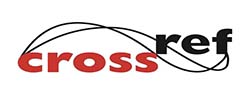Author: Le Phu Tuan, Vu Thi Kim Oanh, Le Duy Khuong, Nguyen Hai Hoa, Alfienido S. Burce
![]() DOI: 10.22161/ijeab/3.2.7
DOI: 10.22161/ijeab/3.2.7
Keyword: Alum, Reactive Blue 19, Calcium Hydroxide, Poly Aluminum Chloride and Flocculation.
Abstract: There are a variety of primary coagulants which can be used in a water treatment plant. One of the earliest, and still the most extensively used, is aluminum sulfate, also known as alum. Aluminum Sulfate (Alum) is one of the most commonly used flocculent in waste water treatment processes. Effectiveness of Alum in flocculation process is determined by many factors such as the effluents pH, flocculent dose as well as the use of catalyst to improve efficiency rate of flocculation. Hence special attention to these factors especially the use of catalyst has been brought about by this study. Experiments were carried out using Reactive Blue 19 Dye as the contaminant of waste water and two catalysts namely Calcium Hydroxide (CaOH2) and Poly Aluminum Chloride (PACl) were evaluated. The results obtained proved that indeed after addition of catalysts, removal efficiency rates of Alum can be increased up to 25% using Calcium Hydroxide and up to 35% using Poly Aluminum Chloride compared to Alum alone. The optimum conditions for this study were at pH 5.5 ~7.5, 300 mg/L of Alum 30seconds of rapid mixing time with 300 rpm , 30rpm of mixing rate for 5 minutes and 30 minutes of settling time. Moreover, Alum showed the highest performance under these conditions and using 50 mg/L PACl as catalyst with 98.52% of COD reduction and 90.60% of color reduction. In conclusion, Alum with the support of PACl as catalyst is an effective coagulant, which can reduce the level of COD and Dye Color in Reactive Blue 19 contaminated wastewater.
| Total View: 3464 | Downloads: 720 | Page No: 358-362 |
|
Cite this Article:
MLA
Le Phu Tuan, Vu Thi Kim Oanh, Le Duy Khuong, Nguyen Hai Hoa, Alfienido S. Burce, P.(2018).Flocculation of Reactive Blue 19 (RB19) using Alum and the Effects of Catalysts Addition. International Journal of Environment Agriculture and Biotechnology(ISSN: 2456-1878).3(2), 358-362.10.22161/ijeab/3.2.7
Le Phu Tuan, Vu Thi Kim Oanh, Le Duy Khuong, Nguyen Hai Hoa, Alfienido S. Burce, P.(2018).Flocculation of Reactive Blue 19 (RB19) using Alum and the Effects of Catalysts Addition. International Journal of Environment Agriculture and Biotechnology(ISSN: 2456-1878).3(2), pp.358-362.
Le Phu Tuan, Vu Thi Kim Oanh, Le Duy Khuong, Nguyen Hai Hoa, Alfienido S. Burce. 2018."Flocculation of Reactive Blue 19 (RB19) using Alum and the Effects of Catalysts Addition". International Journal of Environment Agriculture and Biotechnology(ISSN: 2456-1878).3(2):358-362.Doi:10.22161/ijeab/3.2.7
Le Phu Tuan, Vu Thi Kim Oanh, Le Duy Khuong, Nguyen Hai Hoa, Alfienido S. Burce."Flocculation of Reactive Blue 19 (RB19) using Alum and the Effects of Catalysts Addition", International Journal of Environment Agriculture and Biotechnology,vol.3,no. 2, pp.358-362,2018.
@article { lephutuan2018flocculation,
title={Flocculation of Reactive Blue 19 (RB19) using Alum and the Effects of Catalysts Addition},
author={Le Phu Tuan, Vu Thi Kim Oanh, Le Duy Khuong, Nguyen Hai Hoa, Alfienido S. Burce , R},
journal={International Journal of Environment Agriculture and Biotechnology},
volume={3},
year= {2018} ,
}
























